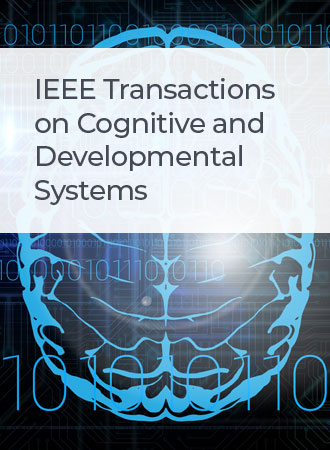SpikingViT: A Multiscale Spiking Vision Transformer Model for Event-Based Object Detection
IF 4.9
3区 计算机科学
Q1 COMPUTER SCIENCE, ARTIFICIAL INTELLIGENCE
IEEE Transactions on Cognitive and Developmental Systems
Pub Date : 2024-07-04
DOI:10.1109/TCDS.2024.3422873
引用次数: 0
Abstract
Event cameras have unique advantages in object detection, capturing asynchronous events without continuous frames. They excel in dynamic range, low latency, and high-speed motion scenarios, with lower power consumption. However, aggregating event data into image frames leads to information loss and reduced detection performance. Applying traditional neural networks to event camera outputs is challenging due to event data's distinct characteristics. In this study, we present a novel spiking neural networks (SNNs)-based object detection model, the spiking vision transformer (SpikingViT) to address these issues. First, we design a dedicated event data converting module that effectively captures the unique characteristics of event data, mitigating the risk of information loss while preserving its spatiotemporal features. Second, we introduce SpikingViT, a novel object detection model that leverages SNNs capable of extracting spatiotemporal information among events data. SpikingViT combines the advantages of SNNs and transformer models, incorporating mechanisms such as attention and residual voltage memory to further enhance detection performance. Extensive experiments have substantiated the remarkable proficiency of SpikingViT in event-based object detection, positioning it as a formidable contender. Our proposed approach adeptly retains spatiotemporal information inherent in event data, leading to a substantial enhancement in detection performance.SpikingViT:用于基于事件的物体检测的多尺度尖峰视觉转换器模型
事件相机在目标检测方面具有独特的优势,可以捕捉不需要连续帧的异步事件。它们在动态范围、低延迟和高速运动场景中表现出色,功耗更低。然而,将事件数据聚合到图像帧中会导致信息丢失,降低检测性能。由于事件数据的独特特性,将传统神经网络应用于事件摄像机输出具有挑战性。在这项研究中,我们提出了一种新的基于峰值神经网络(SNNs)的目标检测模型,即峰值视觉变压器(SpikingViT)来解决这些问题。首先,我们设计了一个专用的事件数据转换模块,有效地捕获事件数据的独特特征,在保留其时空特征的同时降低信息丢失的风险。其次,我们引入了SpikingViT,这是一种新的目标检测模型,它利用了能够从事件数据中提取时空信息的snn。SpikingViT结合了snn和变压器模型的优点,结合了注意和剩余电压记忆等机制,进一步提高了检测性能。大量的实验已经证实了SpikingViT在基于事件的目标检测中的卓越能力,将其定位为一个强大的竞争者。我们提出的方法巧妙地保留了事件数据中固有的时空信息,从而大大提高了检测性能。
本文章由计算机程序翻译,如有差异,请以英文原文为准。
求助全文
约1分钟内获得全文
求助全文
来源期刊

IEEE Transactions on Cognitive and Developmental Systems
Computer Science-Software
CiteScore
7.20
自引率
10.00%
发文量
170
期刊介绍:
The IEEE Transactions on Cognitive and Developmental Systems (TCDS) focuses on advances in the study of development and cognition in natural (humans, animals) and artificial (robots, agents) systems. It welcomes contributions from multiple related disciplines including cognitive systems, cognitive robotics, developmental and epigenetic robotics, autonomous and evolutionary robotics, social structures, multi-agent and artificial life systems, computational neuroscience, and developmental psychology. Articles on theoretical, computational, application-oriented, and experimental studies as well as reviews in these areas are considered.
 求助内容:
求助内容: 应助结果提醒方式:
应助结果提醒方式:


